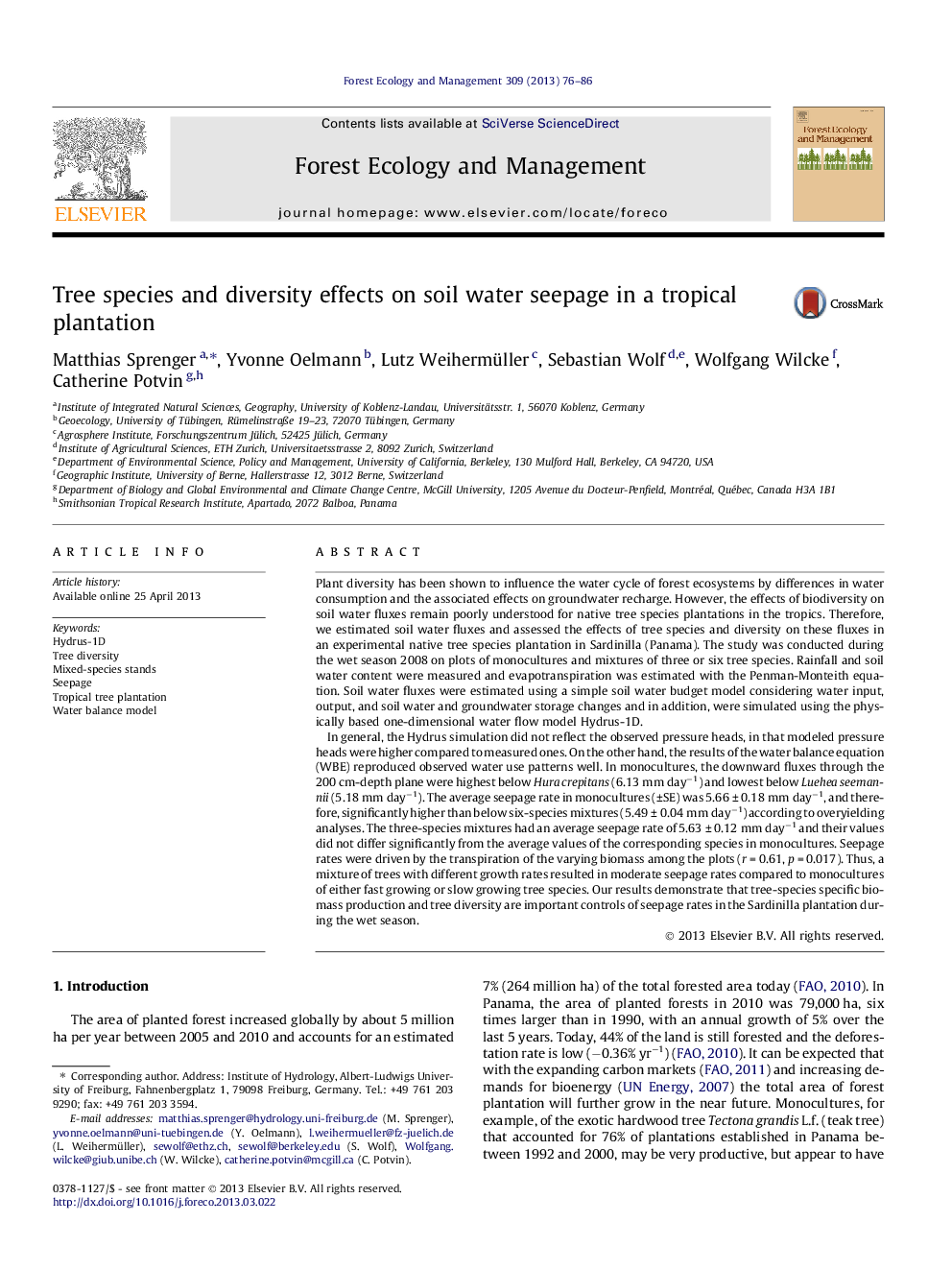| کد مقاله | کد نشریه | سال انتشار | مقاله انگلیسی | نسخه تمام متن |
|---|---|---|---|---|
| 86674 | 159205 | 2013 | 11 صفحه PDF | دانلود رایگان |

• Seepage rates under six-species stands were lower than the average monoculture stand at a tropical plantation.
• A simple water balance approach was superior to a physical based model (Hydrus-1D) during the wet season.
• More productive stands have lower groundwater tables and soil moisture.
Plant diversity has been shown to influence the water cycle of forest ecosystems by differences in water consumption and the associated effects on groundwater recharge. However, the effects of biodiversity on soil water fluxes remain poorly understood for native tree species plantations in the tropics. Therefore, we estimated soil water fluxes and assessed the effects of tree species and diversity on these fluxes in an experimental native tree species plantation in Sardinilla (Panama). The study was conducted during the wet season 2008 on plots of monocultures and mixtures of three or six tree species. Rainfall and soil water content were measured and evapotranspiration was estimated with the Penman-Monteith equation. Soil water fluxes were estimated using a simple soil water budget model considering water input, output, and soil water and groundwater storage changes and in addition, were simulated using the physically based one-dimensional water flow model Hydrus-1D.In general, the Hydrus simulation did not reflect the observed pressure heads, in that modeled pressure heads were higher compared to measured ones. On the other hand, the results of the water balance equation (WBE) reproduced observed water use patterns well. In monocultures, the downward fluxes through the 200 cm-depth plane were highest below Hura crepitans (6.13 mm day−1) and lowest below Luehea seemannii (5.18 mm day−1). The average seepage rate in monocultures (±SE) was 5.66 ± 0.18 mm day−1, and therefore, significantly higher than below six-species mixtures (5.49 ± 0.04 mm day−1) according to overyielding analyses. The three-species mixtures had an average seepage rate of 5.63 ± 0.12 mm day−1 and their values did not differ significantly from the average values of the corresponding species in monocultures. Seepage rates were driven by the transpiration of the varying biomass among the plots (r = 0.61, p = 0.017). Thus, a mixture of trees with different growth rates resulted in moderate seepage rates compared to monocultures of either fast growing or slow growing tree species. Our results demonstrate that tree-species specific biomass production and tree diversity are important controls of seepage rates in the Sardinilla plantation during the wet season.
Journal: Forest Ecology and Management - Volume 309, 1 December 2013, Pages 76–86